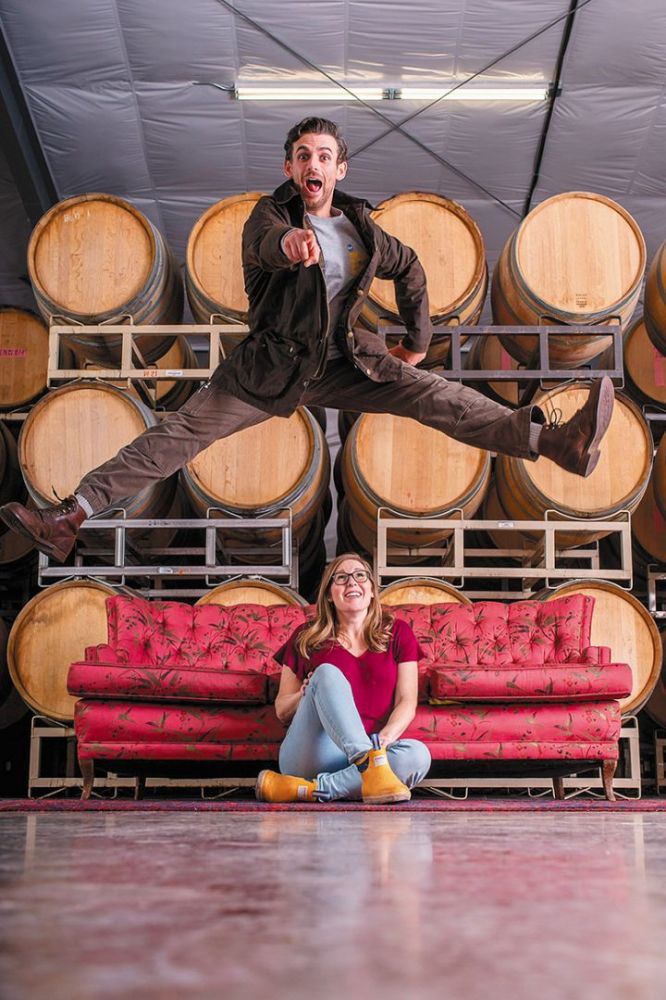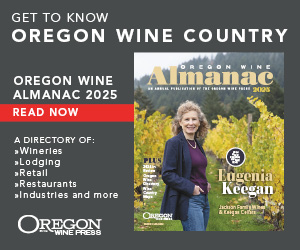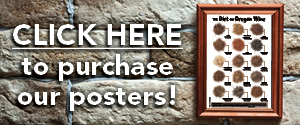The (Bubble) Doctors Are In
Arabilis Winery embraces tirage liège

By Gail Oberst
Kenny and Allison McMahon, owners of Arabilis Winery in Amity, are the first in the country to use a method known as tirage liège. While common in France, the practice is virtually unknown here, where crown caps are standard.
For those unfamiliar with tirage, it’s the stage in traditional sparkling wine production when a still wine is bottled with a mixture of yeast and sugar to create a secondary fermentation in the bottle, producing bubbles. Using cork instead of a crown cap at this stage dates to the 1600s and Dom Pérignon— but it’s rarely practiced stateside due to added expense and complexity.
Both Allison and Kenny hold Ph.D.s in food and fermentation sciences. They proudly embrace their “geeky” approach to winemaking.
Arabilis, now on its second sparkling wine release, won’t be unveiling its tirage liège wines for a few years— aging under cork takes time. Kenny recently spoke at an Amorim Cork seminar on the topic, fielding questions from more than 20 fellow winemakers (see “Putting a Cork In It,” this issue). Although Arabilis is the first U.S. winery to adopt this traditional method, it was obvious from the interest in cork andtirage liège it won’t be the last, according to Amorim officials.
If that claim to fame has you scratching your head and wondering, “So?” the answer lies in the details. Allison explains, “Every decision we make is rooted in our desire to craft wines without compromising quality and remaining true to our vision.”
The couple met at Washington State University, or WSU, while studying food science. Married in 2019, today they work remotely for companies providing product research related to their degrees. The couple have a one-year-old daughter, Penelope.
Allison grew up in Seattle, always with an attraction to science, leaning toward health care. This morphed into an interest in food science. Her dissertation focused on the flavor finish and overall quality of Syrah wines, spurred by an interest in the technical side of winemaking and the role it plays in the experience a wine can elicit for people.
Kenny was raised in Northern Kentucky. At WSU, he worked in collaboration with Chateau Ste. Michelle on his traditional method sparkling winemaking research. He later spent time with Two Vintners and Erica Orr at Orr Wine Lab in Woodinville. In addition to managing Arabilis’ production, he also consults and provides sparkling winemaking services for several client wineries through the McMahons’ second business, The Oregon Sparkling Wine Co., handling all steps from pressing to tirage, riddling and disgorging.
Most winemakers don’t make sparkling wine using cork in the tirage process because the expense for the extra cork alone in the tirage phase doubles the cost of materials. Additionally, the process itself is very hands-on (adding additional cost and time).
“For us, it’s not about doing things the fastest or cheapest way— it’s about doing them the right way for the wines we want to make,” said Allison.
Arabilis also produces still wines– Chardonnay, Pinot Noir and rosé– from select Willamette Valley vineyards. While currently focused on making wines, they hope someday to farm their own estate vineyard for sparkling wine.
Gail Oberst has been a Northwest writer, editor and publisher for decades. Among her favorite gigs was business editor for the News-Register, and editor pro temp for three months for the Oregon Wine Press. Inspired by the OWP, she founded the Oregon Beer Growler with her family, later selling it to Oregon Lithoprint. She continues to edit and write a wide range of articles for magazines, and weekly and regional newspapers. Recently, she published her first fiction novel, Valkyrie Dance, available on Amazon, and is working on her second, San Souci. She lives with her husband, Michael Cairns, a retired ecologist, in Independence, Oregon. They have four grown children and seven grandchildren.










